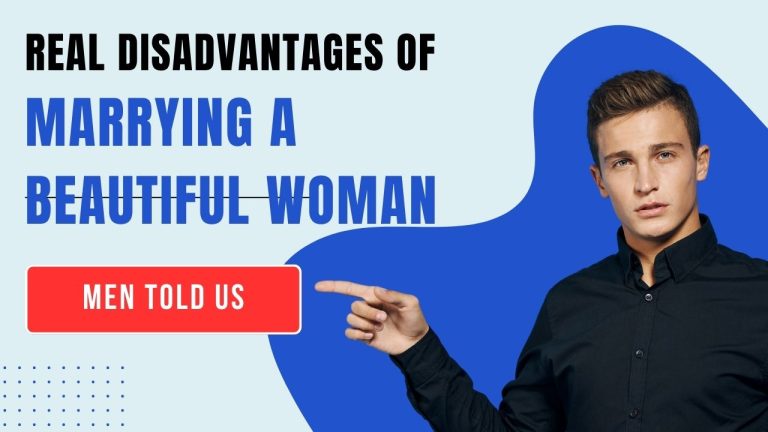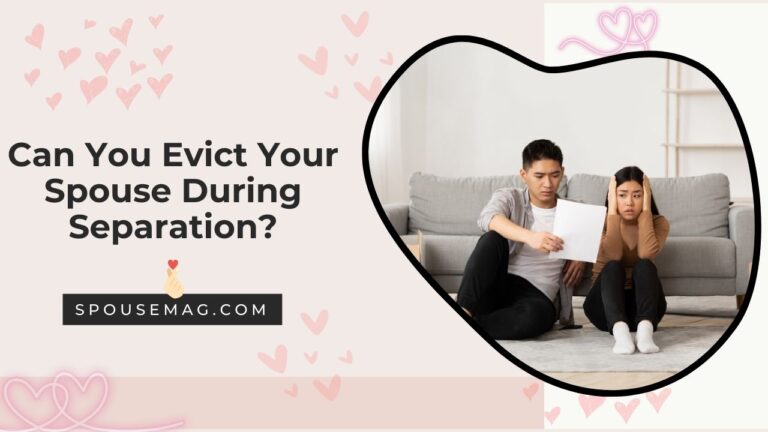
In the pursuit of understanding the intricacies of human relationships, our team embarked on a journey to explore perspectives on marriage.
We delved into a specific aspect that often goes unnoticed or unspoken – the challenges faced by men married to shorter women.
To maintain the integrity of our research, we present 20 comments from men, revealing the unique disadvantages they associate with marrying shorter partners.
The insights gathered from men married to shorter partners shed light on several intricate challenges that go beyond the surface.
Here’s a summary:
Key Insights: Disadvantages of Marrying a Shorter Partner
Height Disparities Impact Daily Life: From simple tasks like reaching for items to more intimate moments like physical comfort, the height difference affects various aspects of daily routines.
Social and Public Challenges: Societal perceptions, public displays of affection, and even seating arrangements at events can become sources of discomfort or inconvenience due to the height contrast.
Wardrobe, Fashion, and Personal Space: Clothing choices, fashion compatibility, and even respecting personal space require careful consideration and adaptation in relationships with height differences.
Logistical Challenges in Everyday Tasks: Activities like grocery shopping, traveling, and even taking photographs together demand extra effort and creative problem-solving to ensure both partners feel included and comfortable.
20 Disadvantages of Marrying a Shorter Partner
1. The Constant Height Struggle
User: TallGuy_1985
Being a tall guy, marrying a shorter woman might seem like a charming idea initially. However, the constant height struggle becomes a real challenge in everyday situations. From adjusting the side mirrors in the car to sharing an umbrella during rain – it’s a perpetual adjustment.
I never thought about how much of a difference height could make in the simplest tasks until I found myself bending down or reaching up regularly. It’s not a deal-breaker, but it’s an aspect that requires continuous adaptation.
2. Wardrobe Woes
User: FashionForward
One often overlooked aspect is the wardrobe inconveniences that arise when you marry a shorter woman. Shopping becomes a task, especially when it comes to sharing clothes or buying gifts.
You end up having two separate wardrobes – one for yourself and one for her. Finding a common ground in terms of style and clothing preferences becomes a delicate balancing act. It’s something I hadn’t anticipated before tying the knot.
3. The ‘Little’ Safety Concerns
User: ProtectiveHubby
While it might sound stereotypical, the safety concerns for a shorter spouse are legitimate. In crowded places or during nighttime strolls, the vulnerability factor can be unsettling.
I find myself constantly being alert, ensuring she’s safe in a crowd or when walking through dimly lit areas. It’s not about underestimating her capabilities, but more about the practical challenges shorter individuals may face in certain situations.
4. The ‘High’ Shelf Syndrome
User: ChefInTheHouse
The kitchen, often considered the heart of a home, can be a source of frustration. Reaching for items on high shelves becomes a daily struggle, turning a simple task into a cumbersome one.
Installing step stools everywhere might seem like a solution, but it doesn’t eliminate the inconvenience entirely. It’s a minor annoyance, but over time, it adds up.
5. Physical Comfort Concerns
User: ComfortZone_24
Physical comfort is often compromised in certain intimate settings. From cuddling on the couch to finding the right alignment in bed, height disparities can impact the comfort levels significantly.
It’s not just about the physical aspect; it’s also about finding a position that feels natural and comfortable for both partners. Sometimes, it takes a bit of trial and error to discover what works best.
6. Height-Related Social Stigma
User: SocialObserver
There’s an unspoken societal stigma attached to the height difference in couples. While it shouldn’t matter, people’s remarks or looks can become bothersome over time.
It’s disheartening to notice the occasional judgmental glances or even unsolicited comments from acquaintances or strangers. It shouldn’t affect us, but it does create an uncomfortable social dynamic at times.
7. The ‘Overhead’ Event Challenge
User: EventPlanner_101
Attending social events or functions brings its own set of challenges, especially when it comes to photographs or dancing. The height difference becomes magnified, making coordination a bit more complex.
Finding the right pose for pictures or dancing comfortably without feeling awkward becomes a conscious effort. It’s about making sure both partners feel comfortable and confident in those situations.
8. Perceptions of ‘Authority’
User: LeadershipRole
In professional or authoritative settings, the height difference might inadvertently influence perceptions of authority or dominance. It’s an unspoken bias that can subtly affect how one is perceived in certain situations.
While it might not always impact actual capabilities, the initial perception can shape interactions or impressions, requiring additional efforts to assert authority or competence.
9. The ‘Mirror’ Dilemma
User: GroomingGuru
Simple tasks like sharing a bathroom mirror become surprisingly complex. The height difference often means either adjusting the mirror constantly or, in some cases, using separate mirrors altogether.
Maintaining a harmonious morning routine can be unexpectedly disrupted when both partners have different needs in terms of mirror placement.
10. The ‘Public Display’ Challenge
User: HoldingHands_78
Engaging in public displays of affection poses its own set of challenges. From holding hands to sharing a quick kiss, the height difference can make these seemingly natural gestures a bit awkward at times.
It’s not about shying away from public affection but rather finding a comfortable way to express love without it feeling forced or uncomfortable.
11. Eye-Level Conversations
User: EyeContact_Enthusiast
Maintaining eye contact during conversations can be a persistent challenge, especially in crowded spaces or social gatherings. Constantly bending down or looking up can be physically taxing and might distract from the conversation itself.
It’s a small detail, but it becomes noticeable in situations where eye contact is crucial for effective communication.
12. The ‘Kid’ Quandary
User: ParentingPuzzle
Planning for a family brings its own considerations. The height genetics dilemma can lead to genuine concerns about potential challenges or insecurities a child might face if one parent is significantly shorter than the other.
It’s not just about the immediate challenges but thinking ahead about potential societal pressures or comments that children might encounter.
13. The ‘Travel’ Trouble
User: AdventureSeeker_87
Embarking on adventures together can pose unforeseen challenges, especially when it comes to travel. From adjusting car seats and airplane legroom to navigating through crowds, the height difference can turn a vacation into a series of adjustments.
It’s not about the destination but the journey itself, and sometimes the journey involves overcoming height-related inconveniences.
14. ‘Reach’ for Affection
User: HugEnthusiast_123*
Expressing affection through hugs can be a bit tricky. While it’s certainly not a deal-breaker, the height difference might require some creativity to ensure that each hug feels warm and inclusive for both partners.
It’s about finding that sweet spot where physical closeness feels natural and unrestricted.
15. ‘Personal Space’ Dynamics
User: PersonalSpace_Insider*
Understanding and respecting personal space becomes a delicate dance. While everyone values their space in a relationship, the height difference might inadvertently lead to unintentional invasion of personal boundaries.
It requires constant communication to strike the right balance and ensure both partners feel comfortable in their shared space.
16. The ‘Ergonomics’ of Household Items
User: ErgoMaster_55*
Ergonomics at home take on a new level of importance. From kitchen countertops to bathroom sinks, the height of household items can impact daily tasks significantly.
Finding or customizing items that cater to both partners’ needs becomes a home improvement project in itself.
17. The ‘Heightened’ Fashion Dilemma
User: StyleConscious_99
Navigating the fashion landscape becomes a bit more complicated. Finding outfits that complement both partners’ styles and proportions can be a meticulous task, as clothing designed for average height couples may not always suit us.
It adds an extra layer to the already complex world of fashion choices.
18. ‘Event Seating’ Predicament
User: SocialGatherer_2020
Attending events with assigned seating can be a puzzle. Whether it’s a concert, theater, or even a dinner party, getting comfortable in seats designed for standard height can be challenging. It often involves strategic seat selection to ensure both partners have an enjoyable experience.
It’s about planning ahead and being mindful of potential discomfort during these social outings.
19. The ‘Photogenic’ Challenge
User: PicturePerfect_76
Capturing picture-perfect moments requires a bit of finesse. Achieving balance in photos becomes an art, and it often involves creative posing to make sure both partners are showcased in the best possible light.
It’s not about masking the height difference but rather highlighting the unique dynamics of the relationship.
20. ‘Grocery Shopping’ Struggle
User: GroceryGuru_2021
Something as routine as grocery shopping can become a logistical puzzle. From reaching items on higher shelves to maneuvering through crowded aisles, the height difference adds an extra layer of complexity to an otherwise mundane task.
It’s about teamwork and finding efficient ways to navigate the grocery store together.
(FAQs) about Marrying a Shorter Woman
Q1: Is it disrespectful to discuss these challenges of marrying a shorter woman?
A: Not at all. Addressing challenges in any relationship is essential for understanding and growth. Our intention is to shed light on often overlooked aspects to encourage open conversations rather than perpetuate disrespect or stereotypes.
Q2: Are these challenges universal or subjective?
A: While some challenges might be more common, experiences vary from person to person and couple to couple. These insights are based on shared experiences from individuals in our research.
Q3: How can couples address these challenges?
A: Communication is key. Couples should openly discuss their concerns and find mutually agreeable solutions. Understanding, compromise, and support are vital for overcoming these challenges.
Q4: Should height differences be a determining factor in choosing a partner?
A: Relationships are multifaceted. While height differences might present challenges, they don’t define the success or compatibility of a relationship. Other factors like mutual respect, shared values, and communication are equally crucial.
Q5: What advice can be offered to couples facing these challenges?
A: Patience, understanding, and a sense of humor go a long way. Embrace differences, communicate openly, and work together to find practical solutions that suit both partners.

As a married wife, founder, and editor of SpouseMag.com – these guides are based on my own personal experiences, observations, research and insights. I am transparent about being inspired by the life and work of the two greatest experts in the relationship space – Dr. John and Julia Gottman, and Harville and Helen. They two are some of the strongest couples, researchers, authors, and counselors when it comes to marriage and relationships. My advice and guides are based on my insights and research, and they are not an alternative to professional advice.




